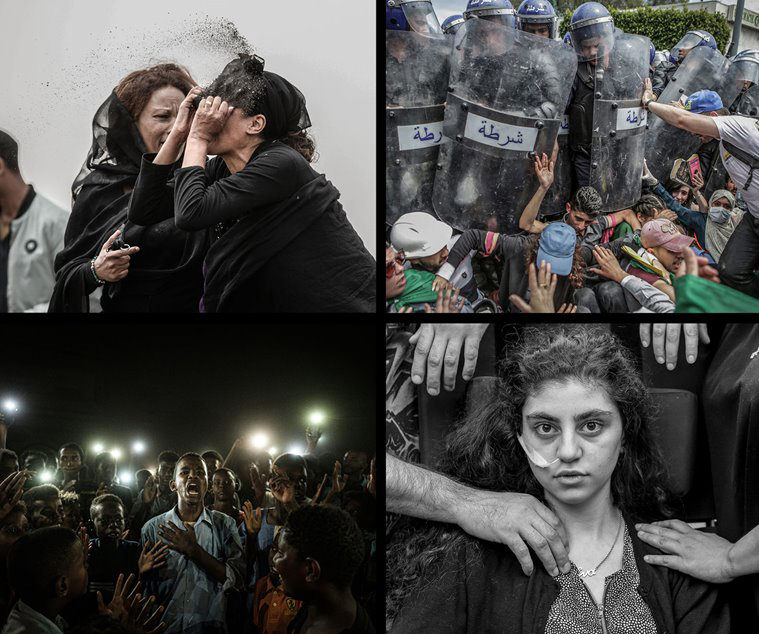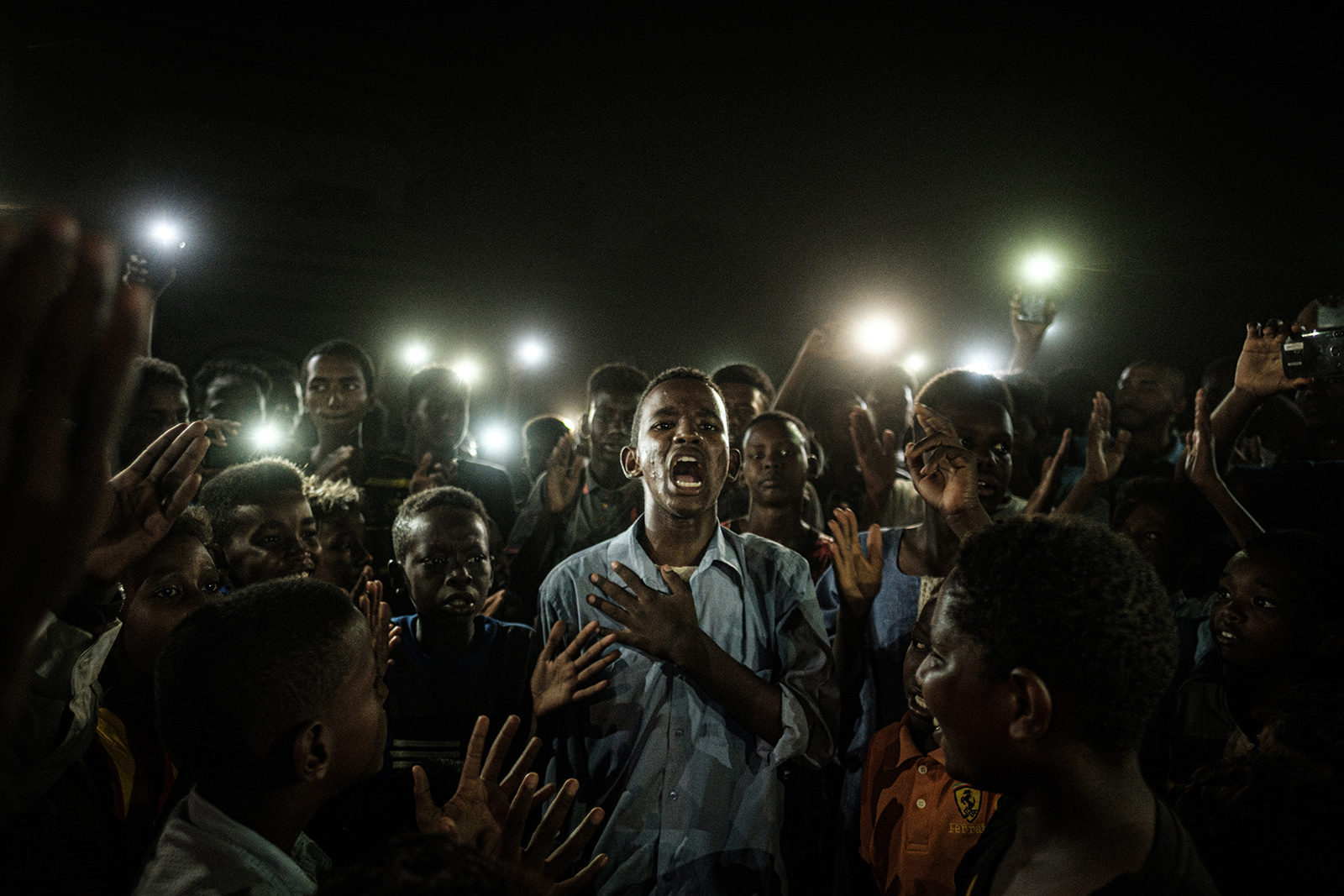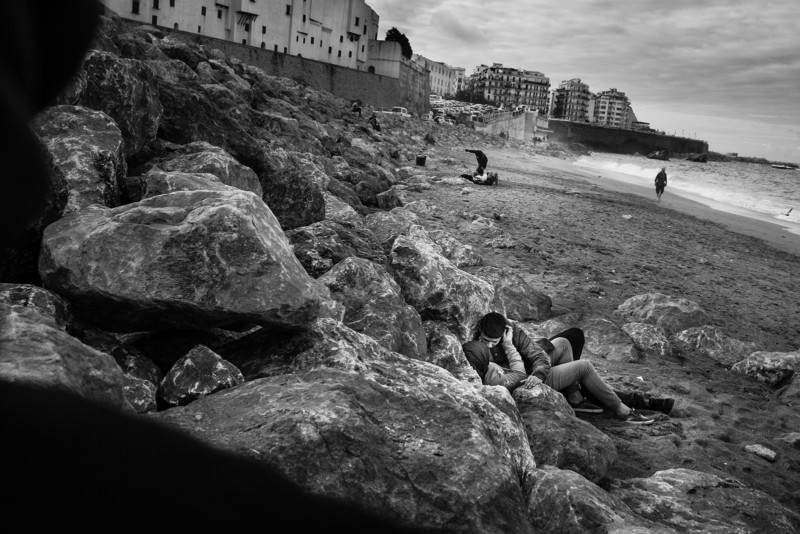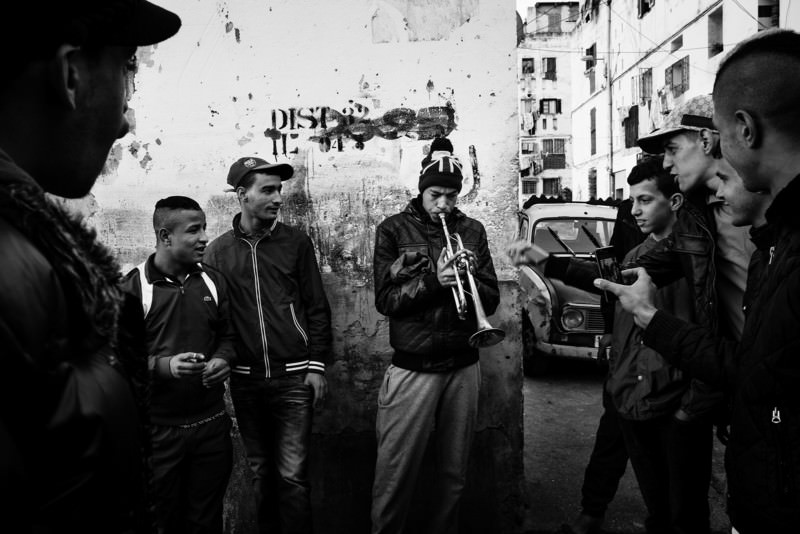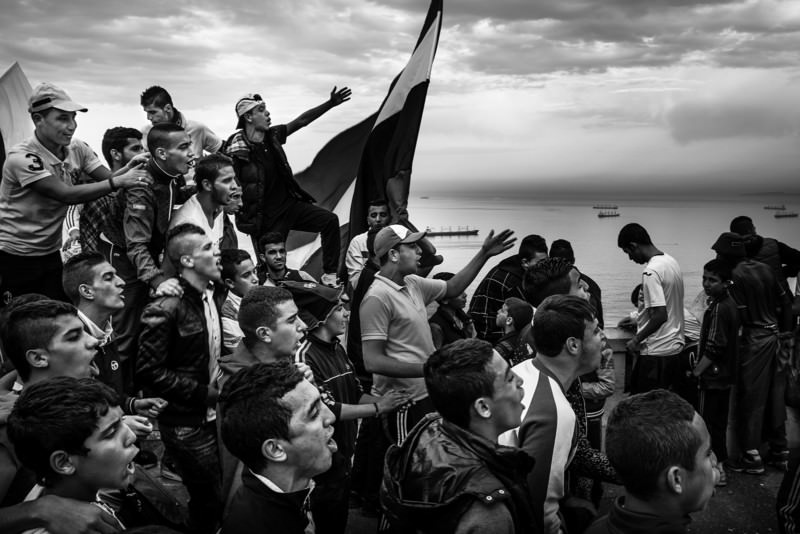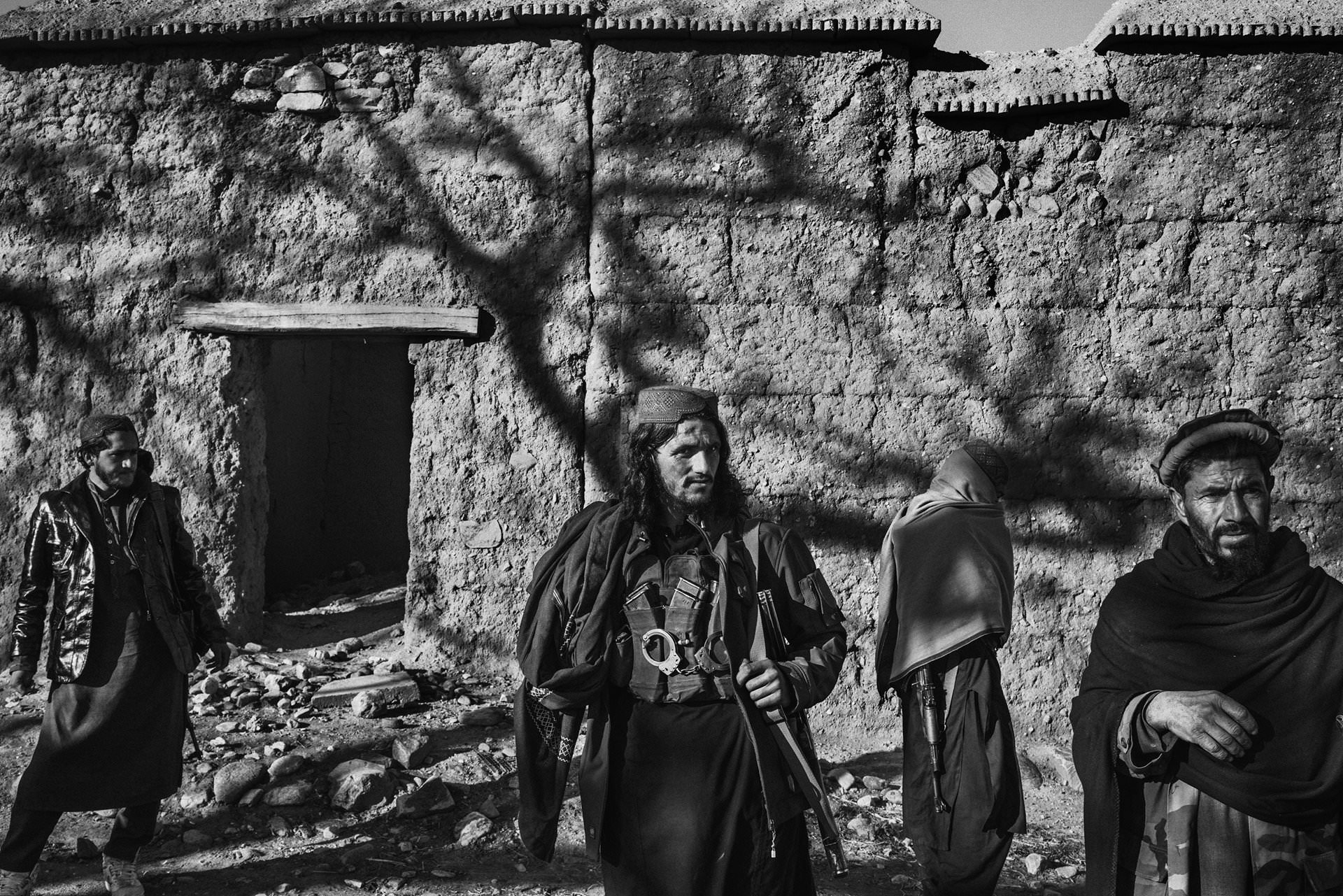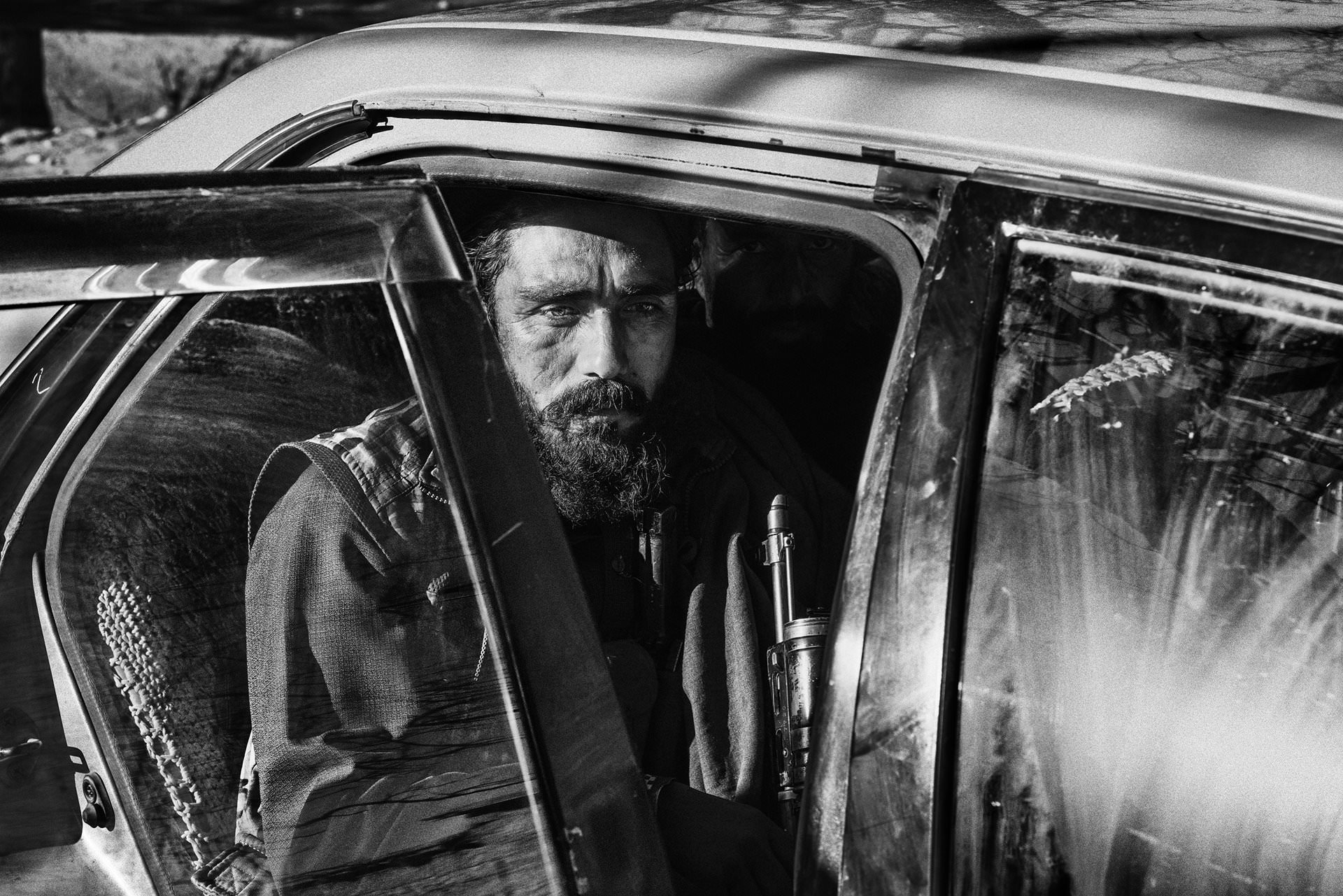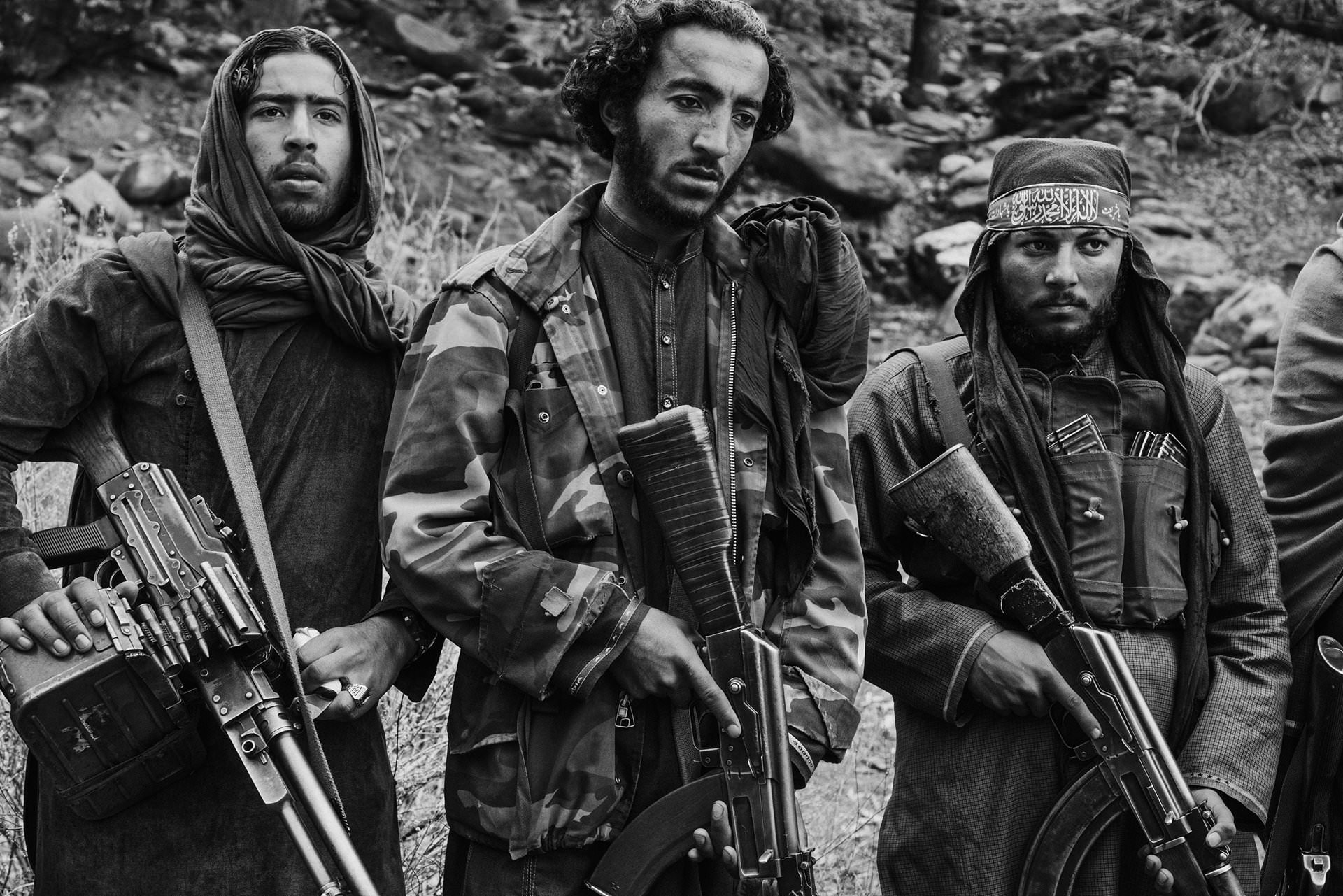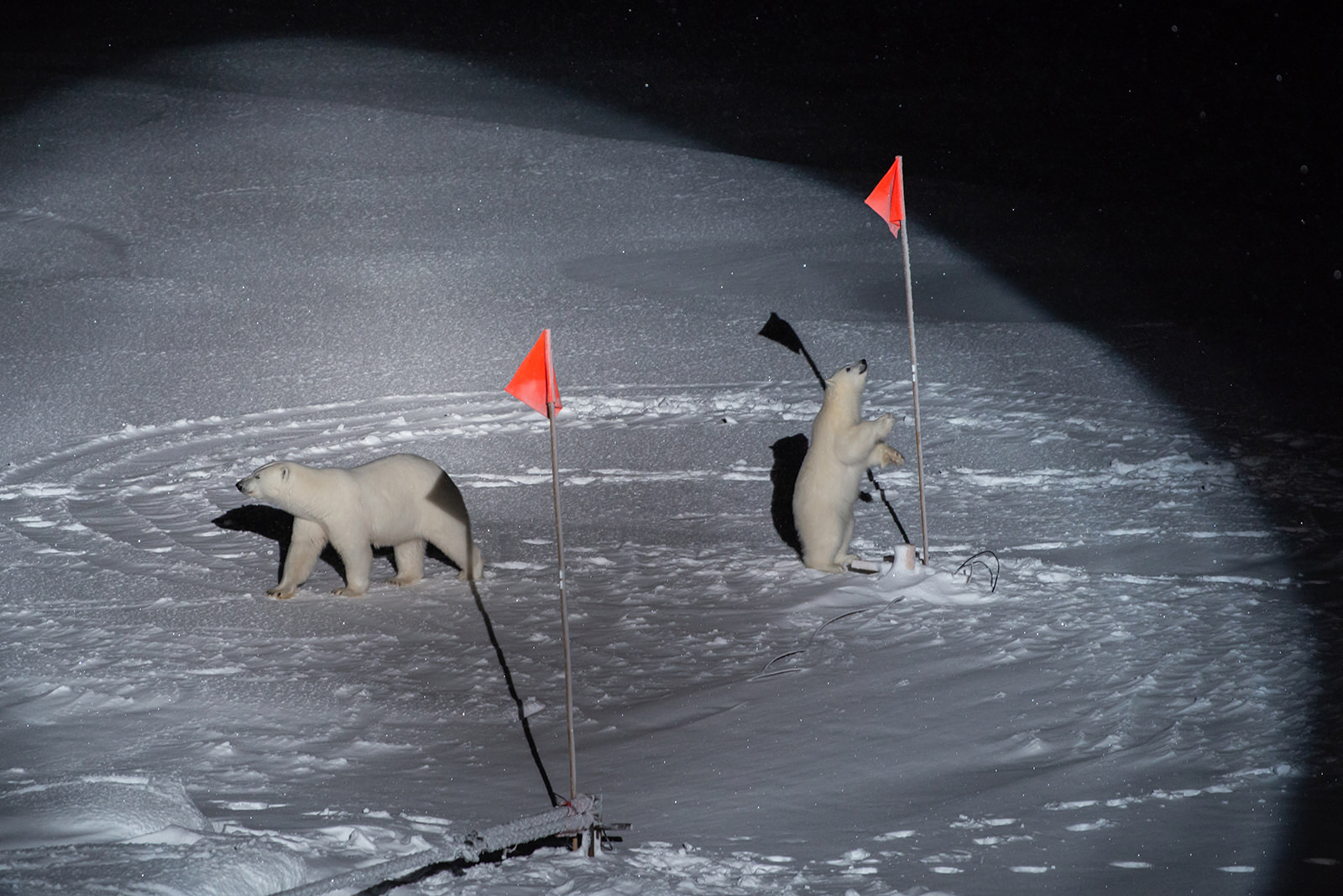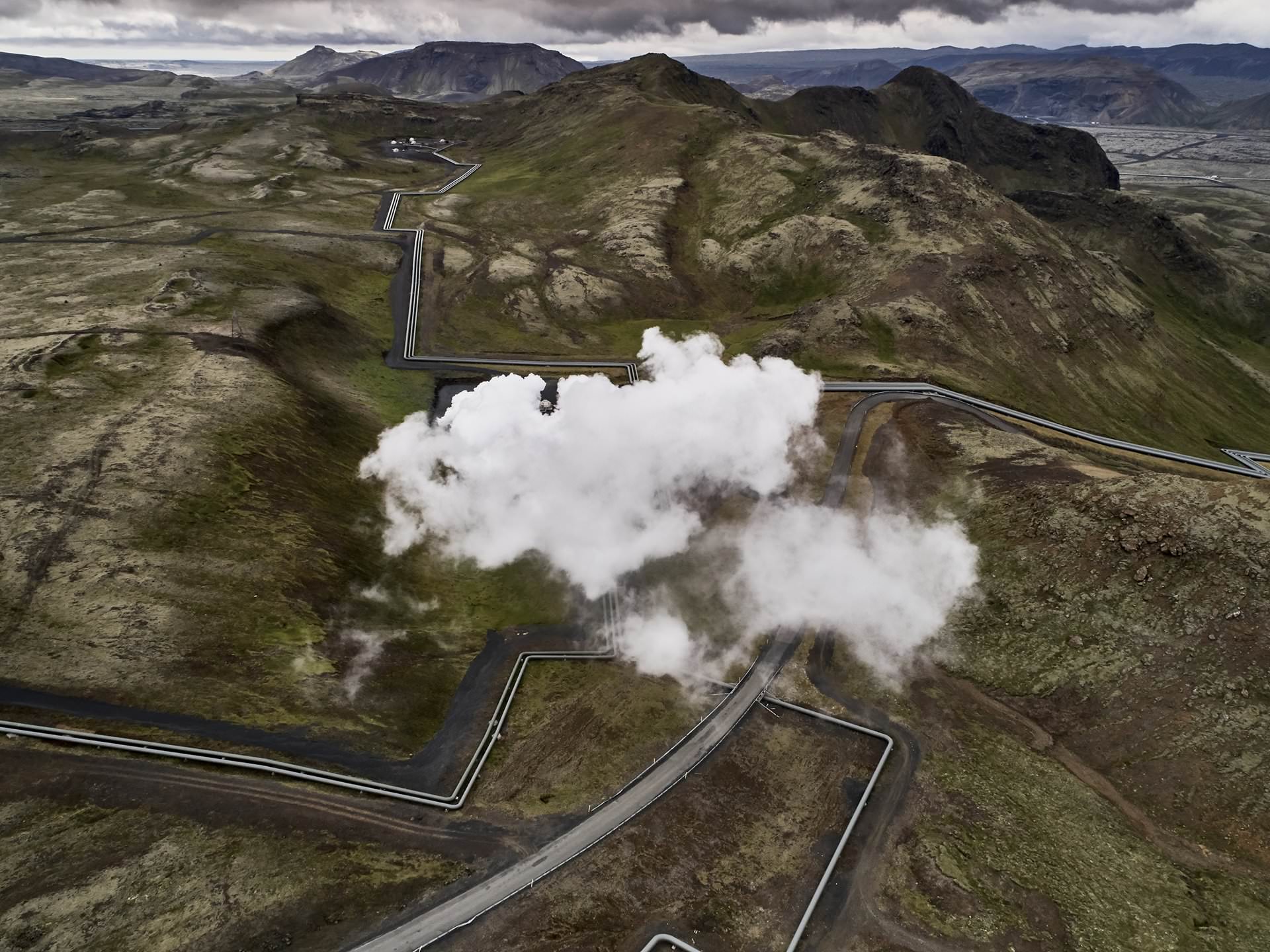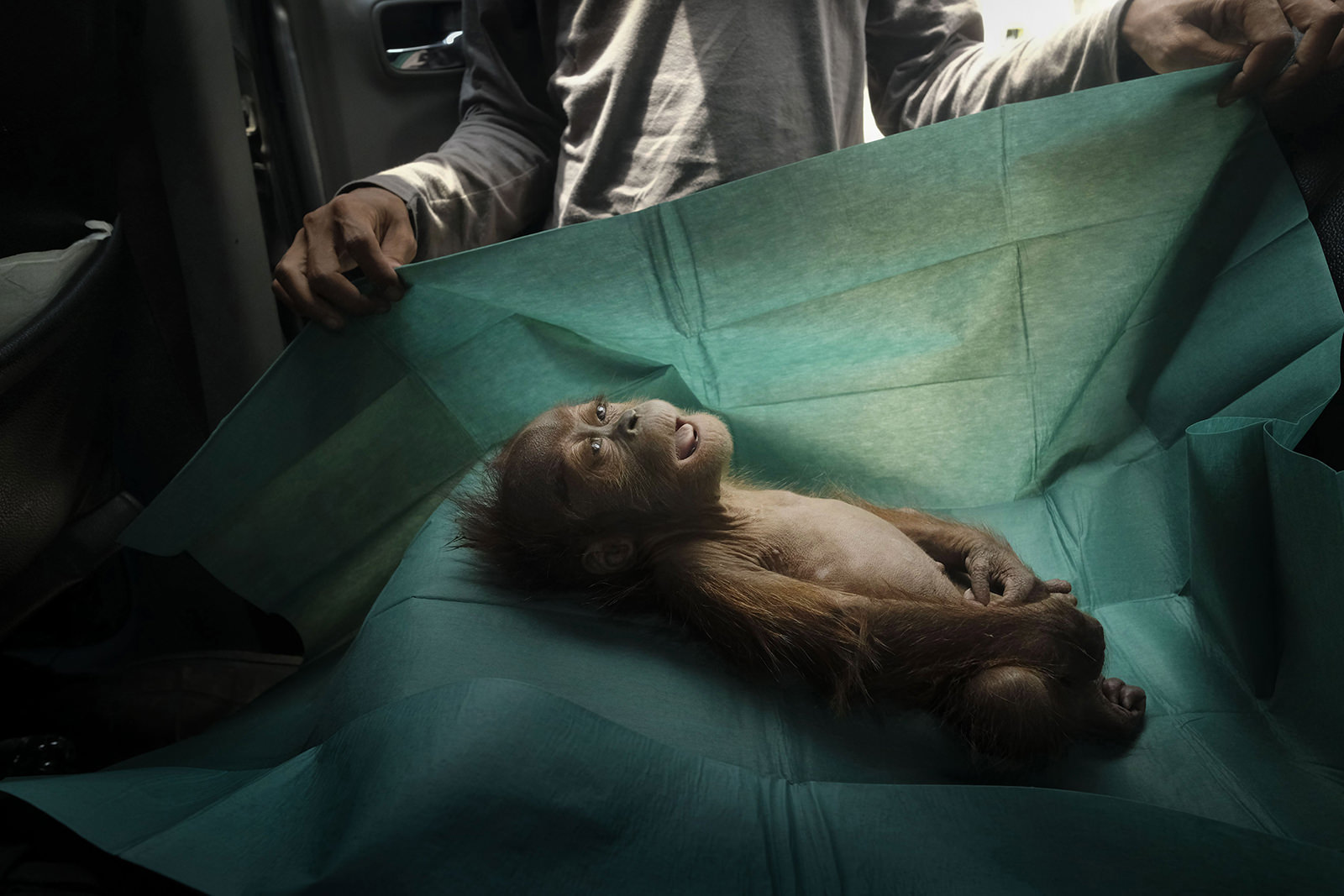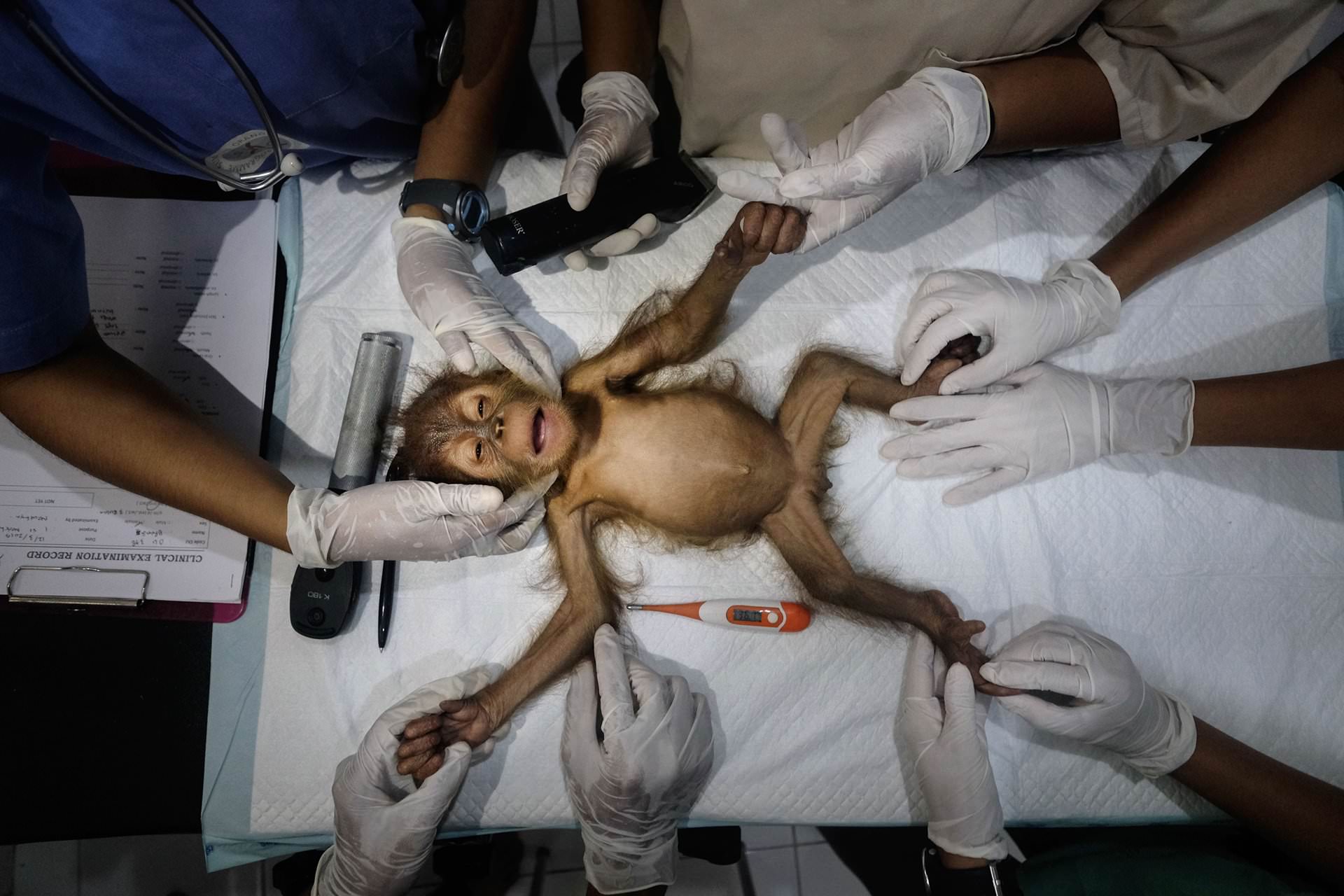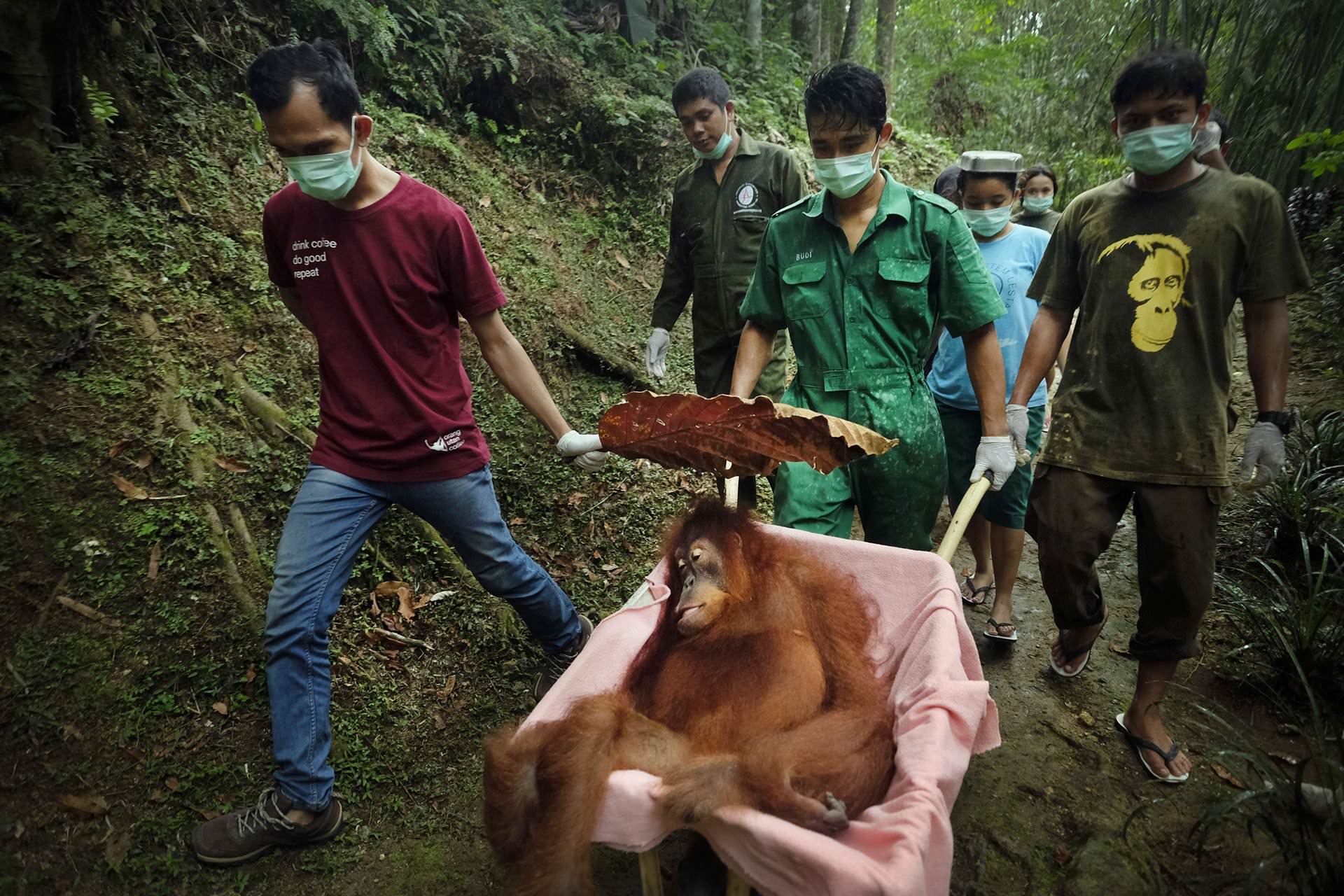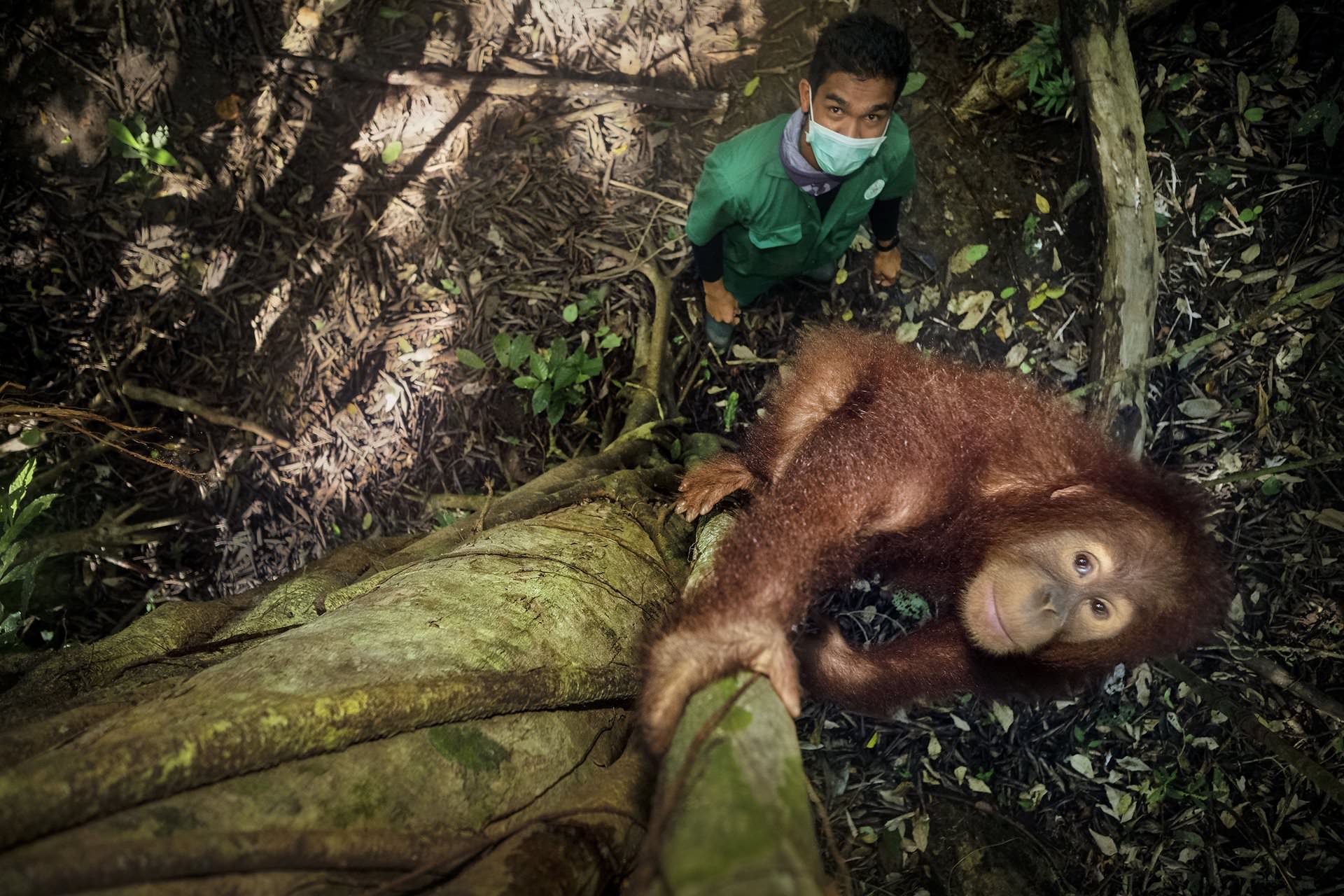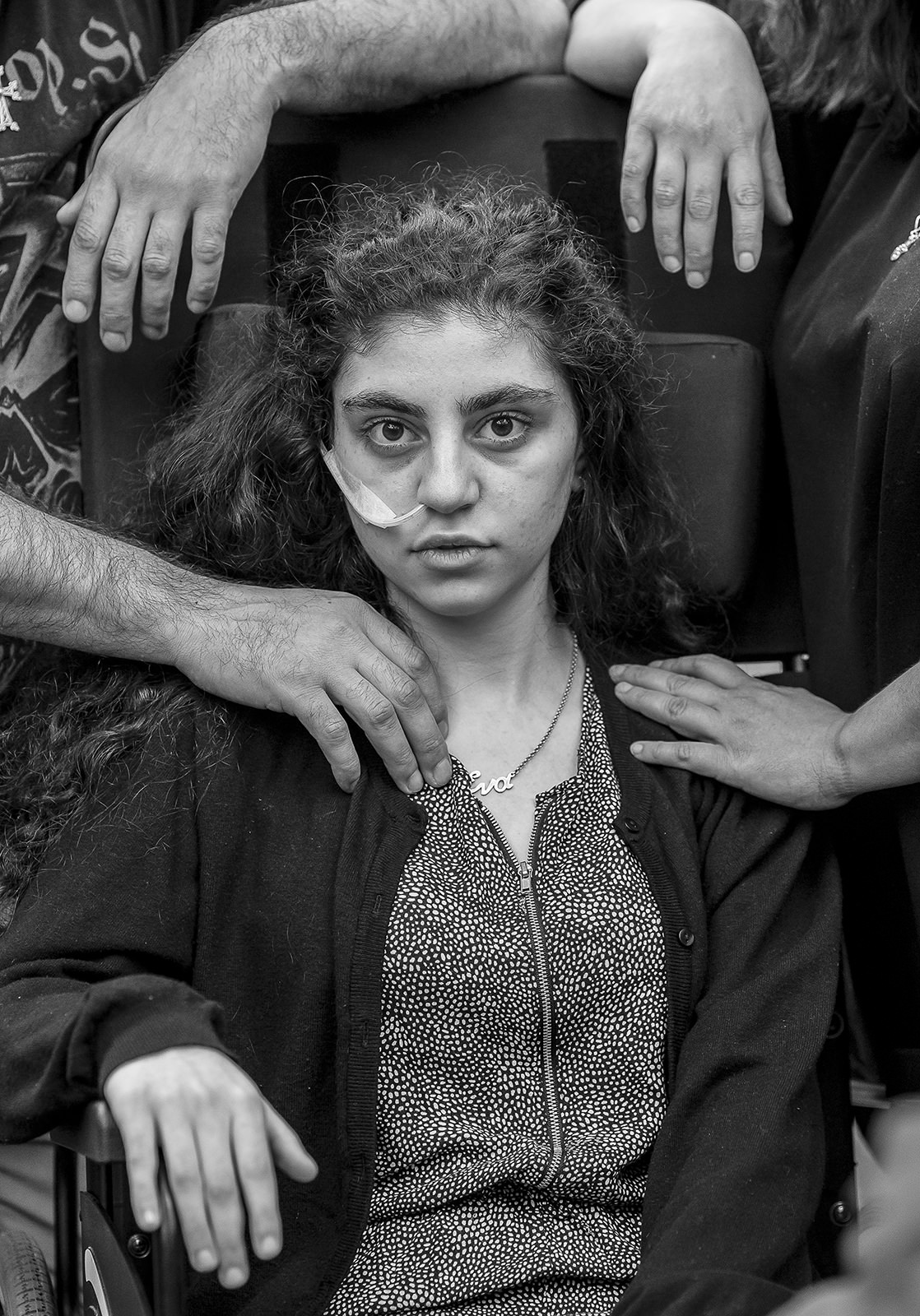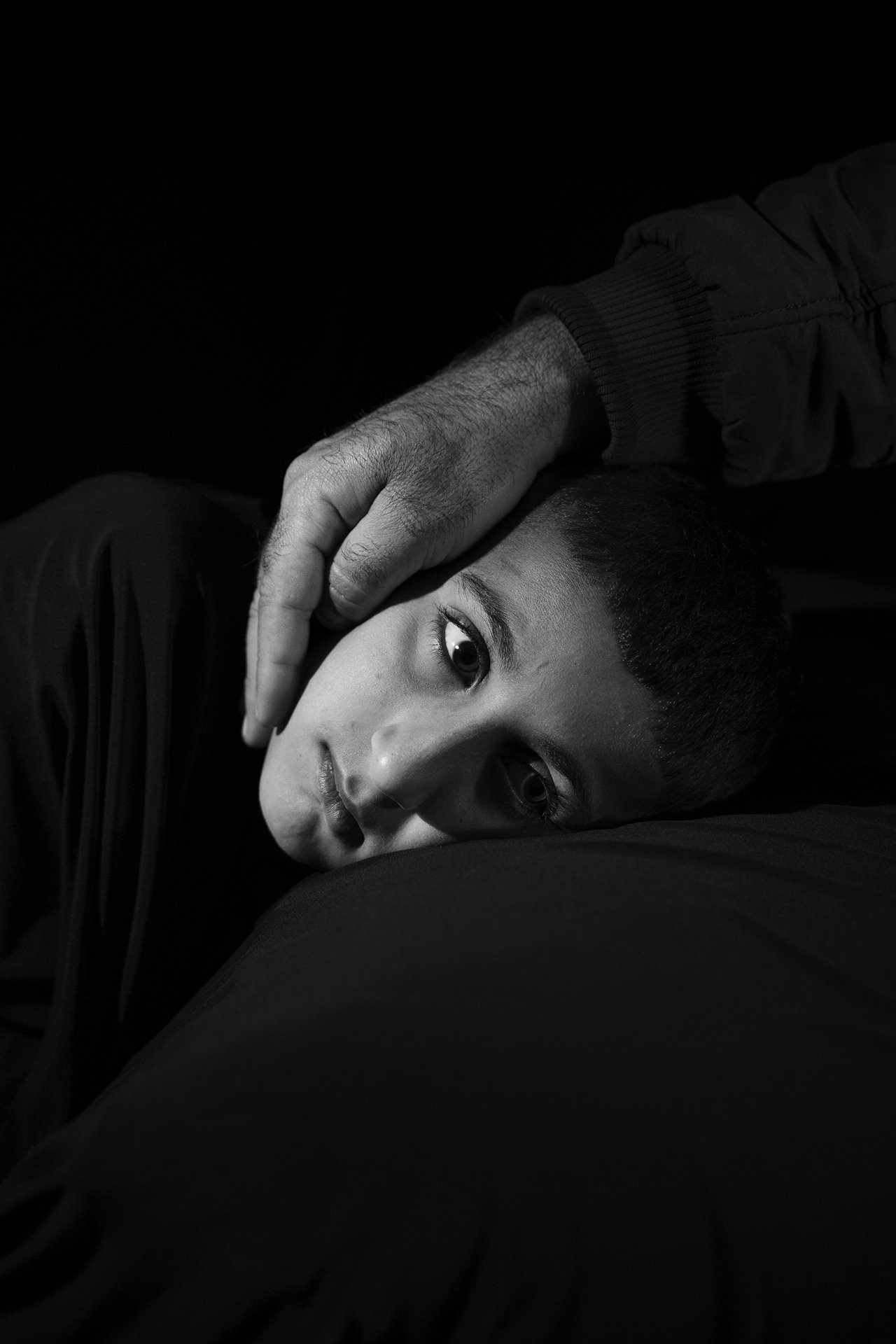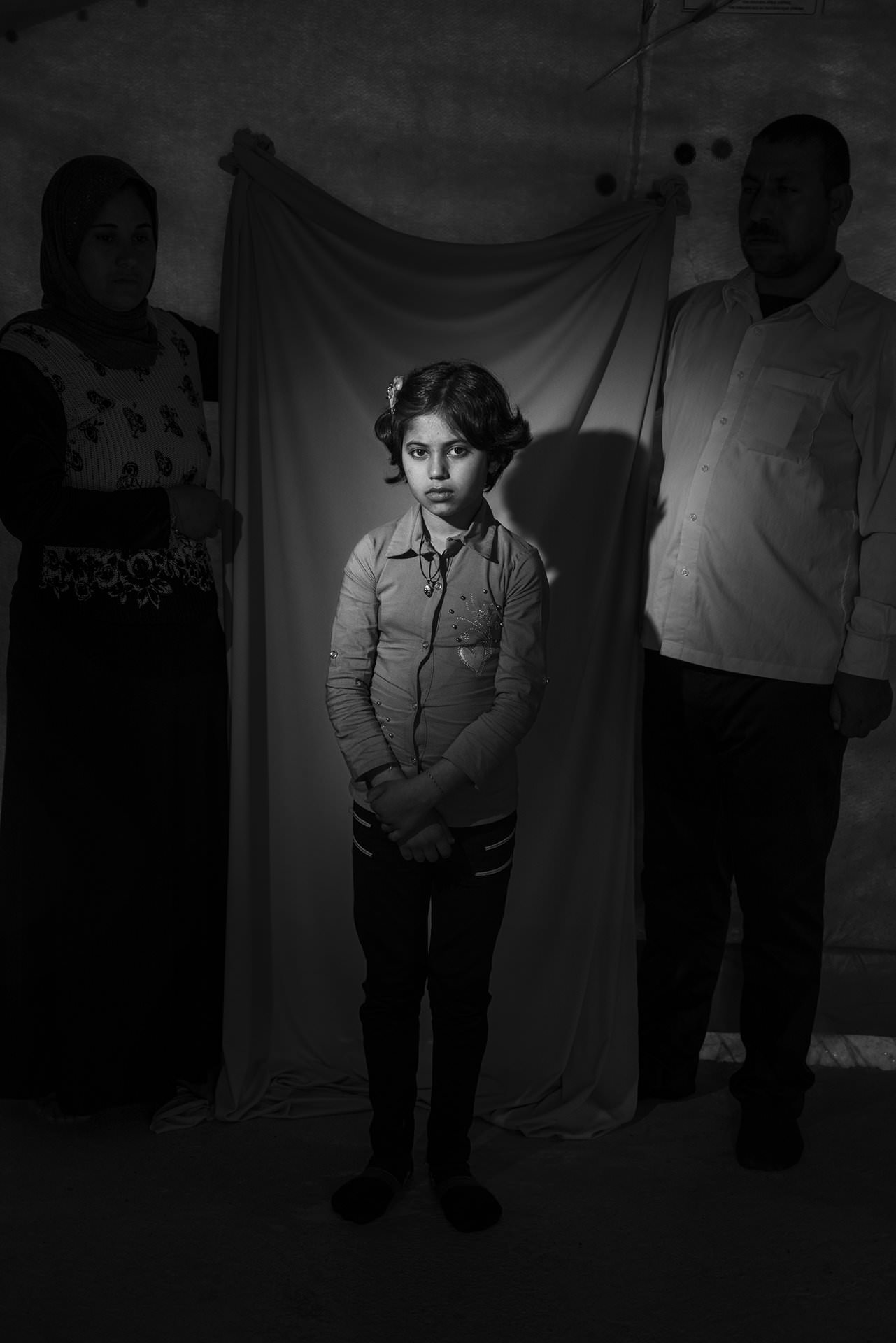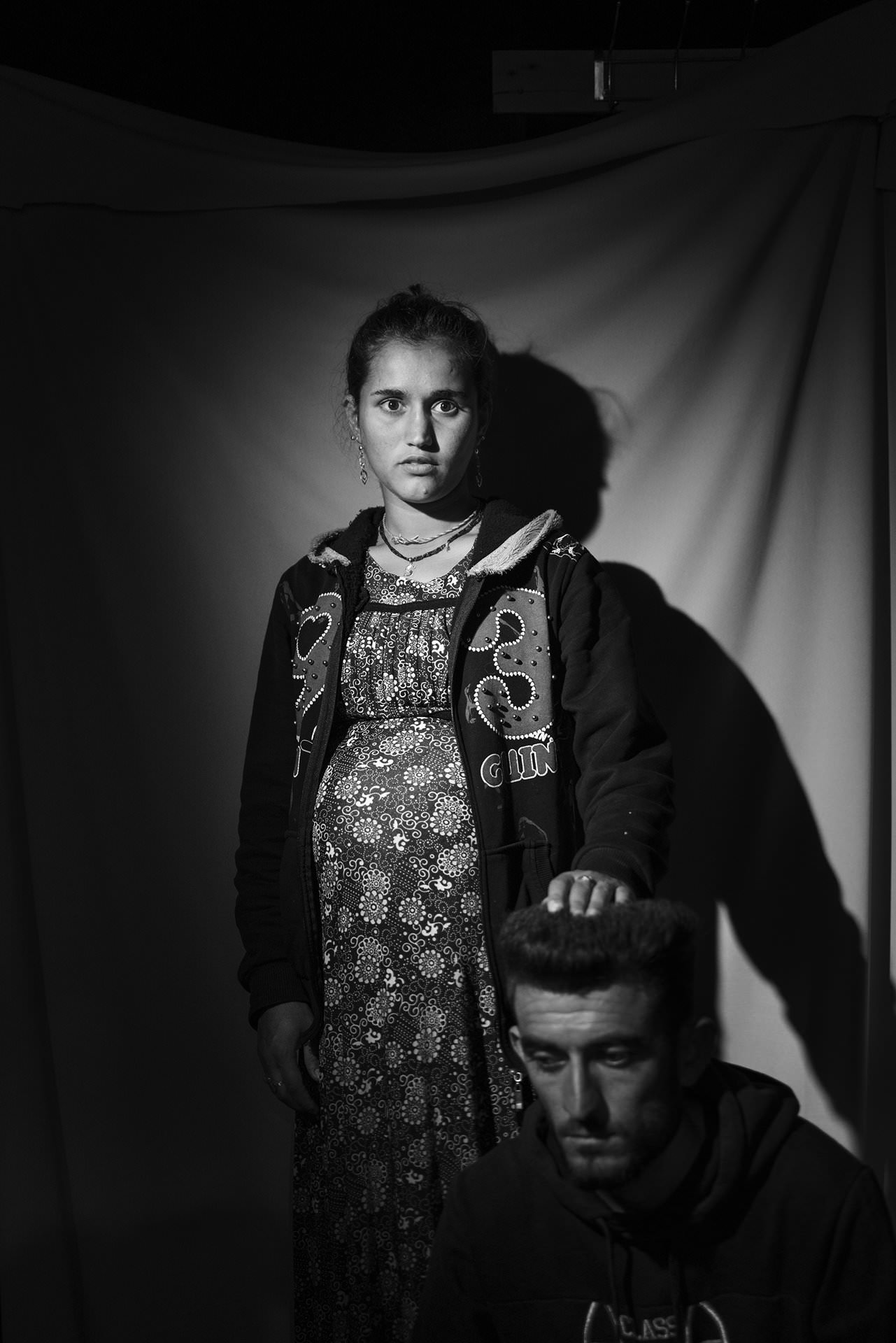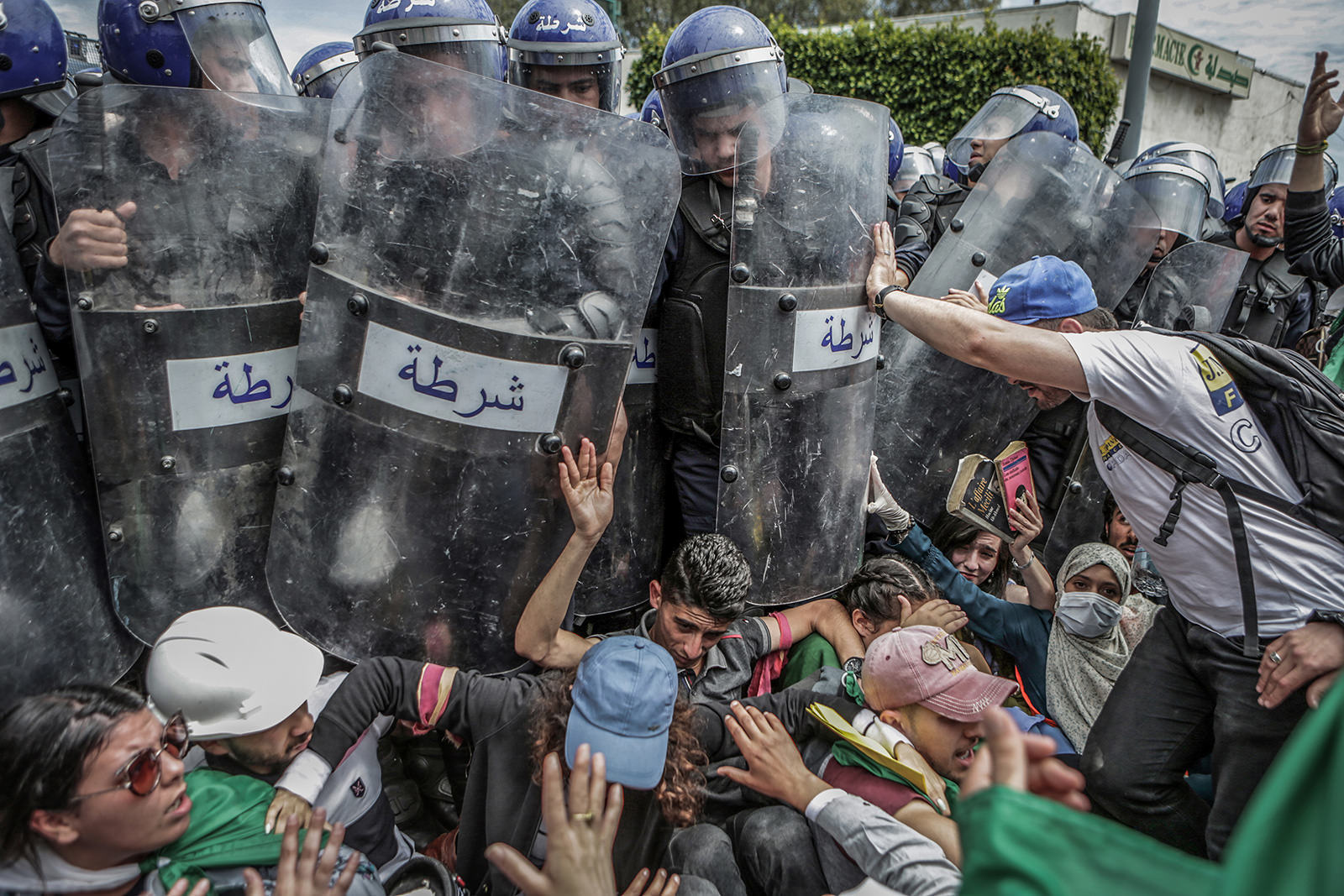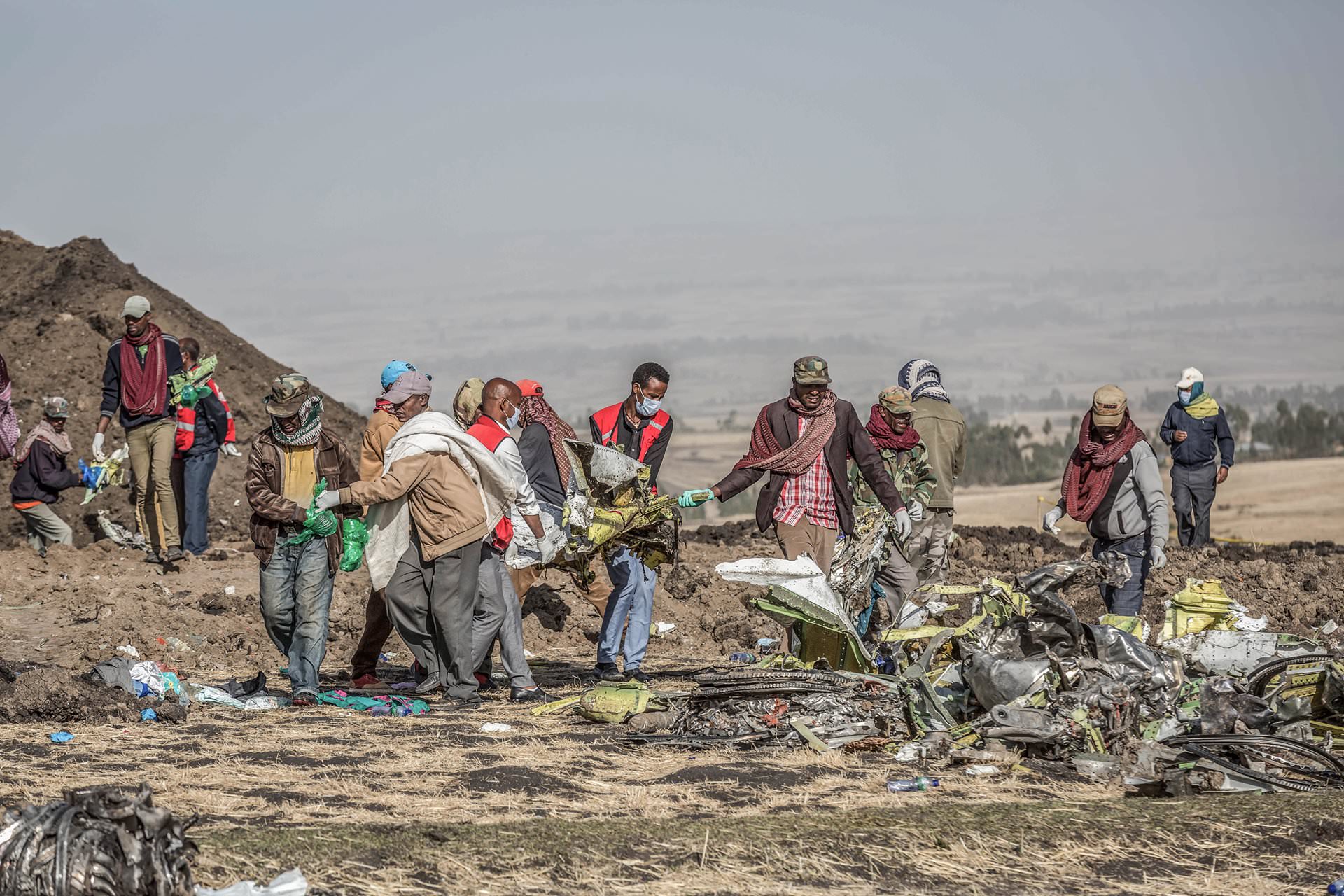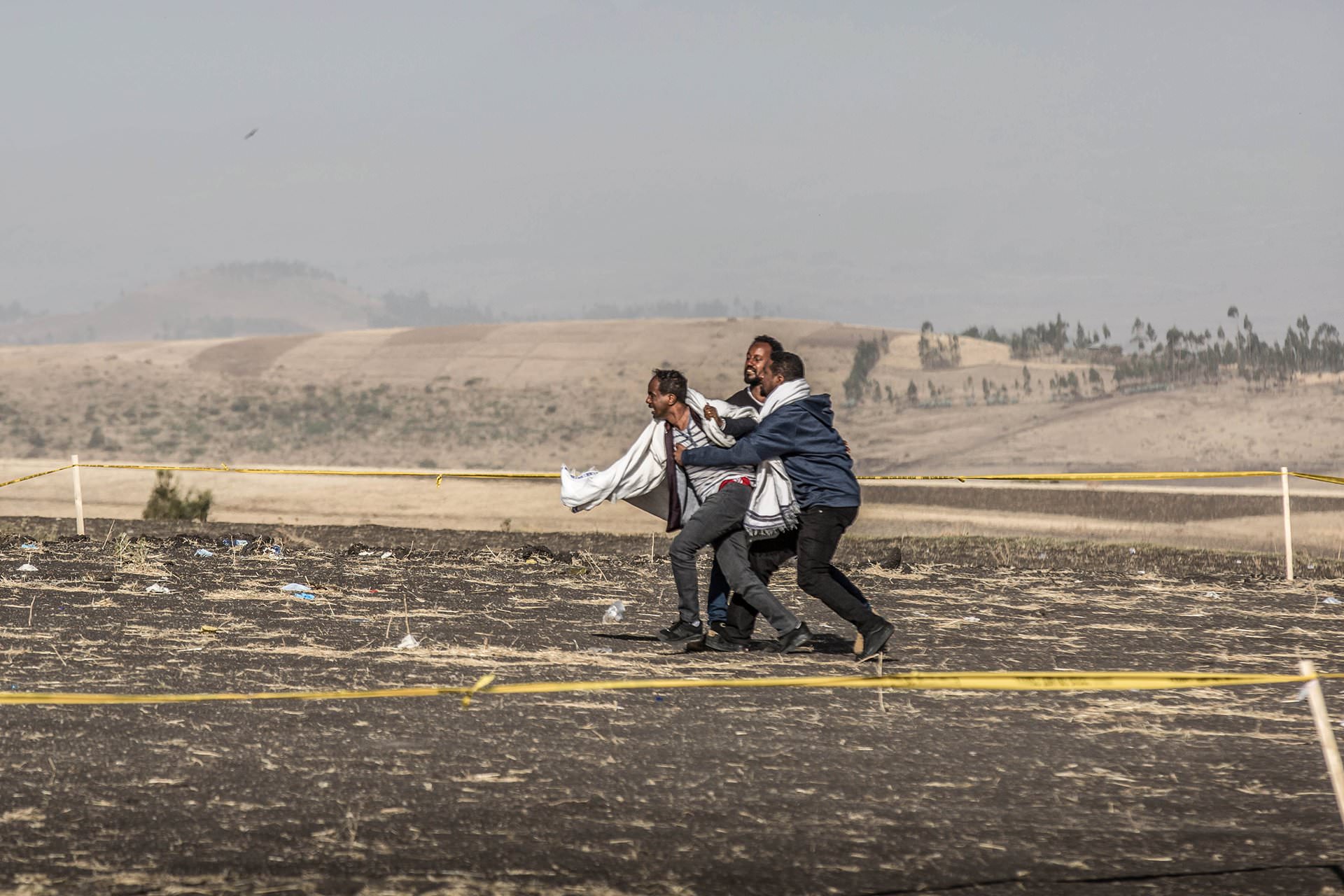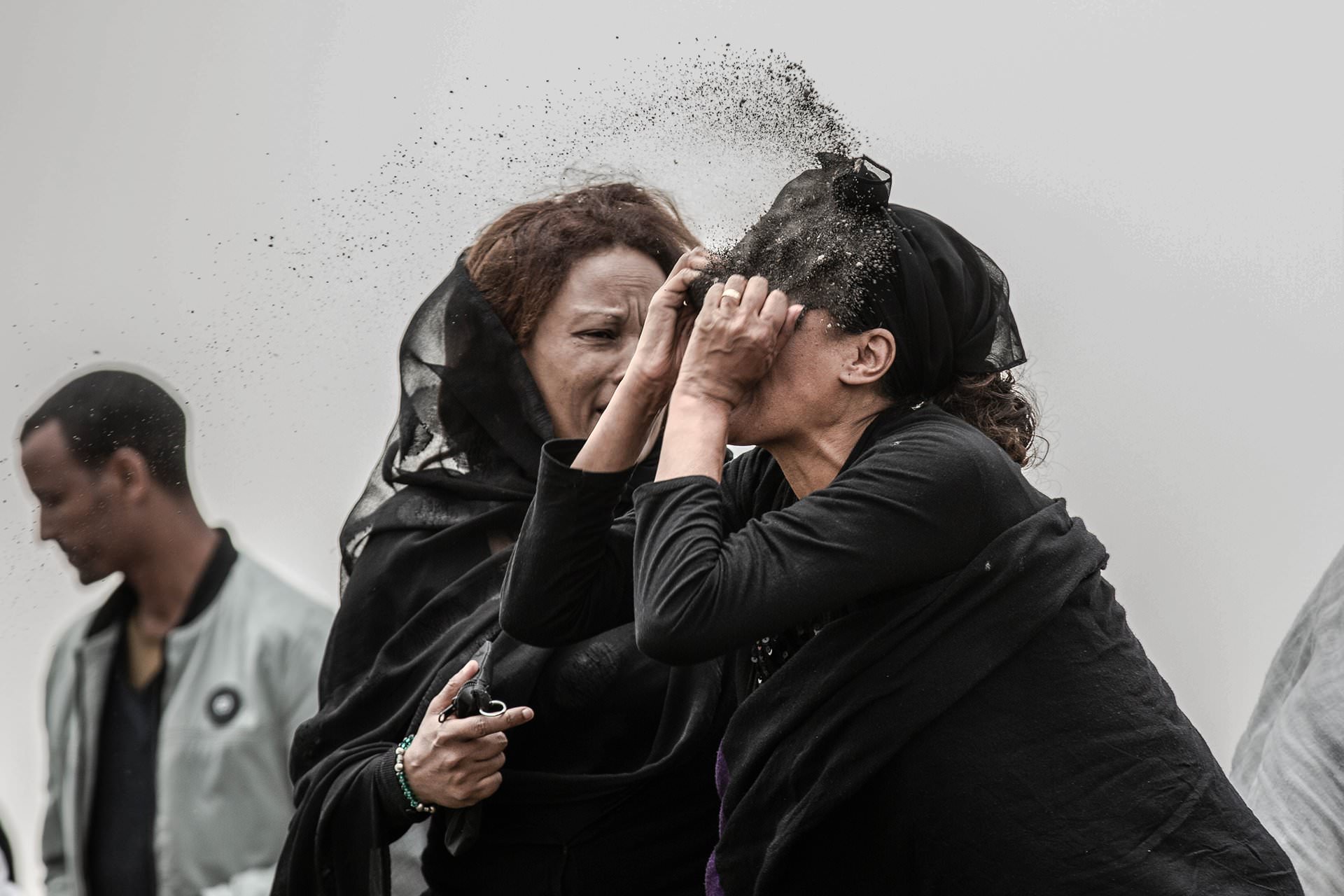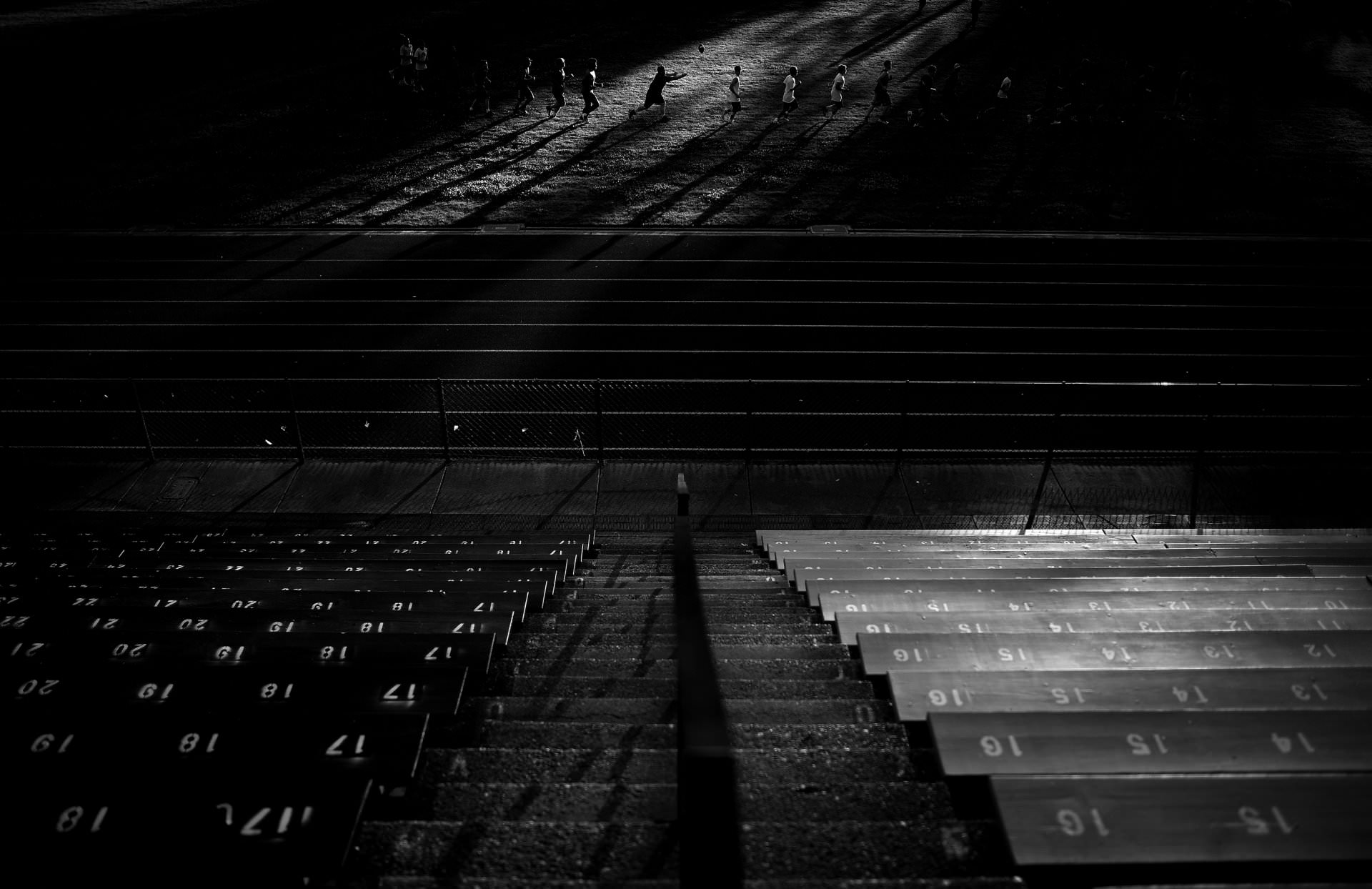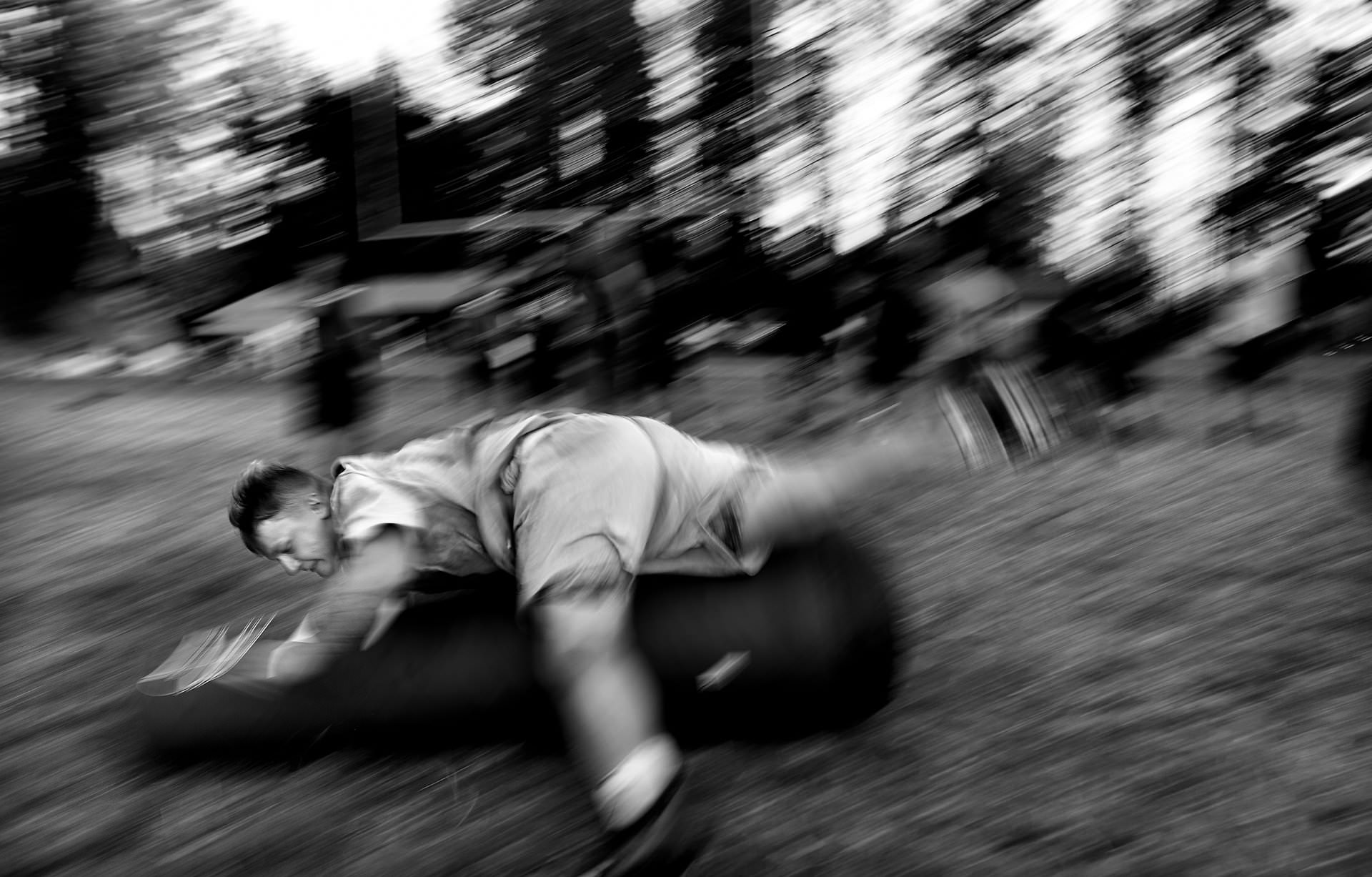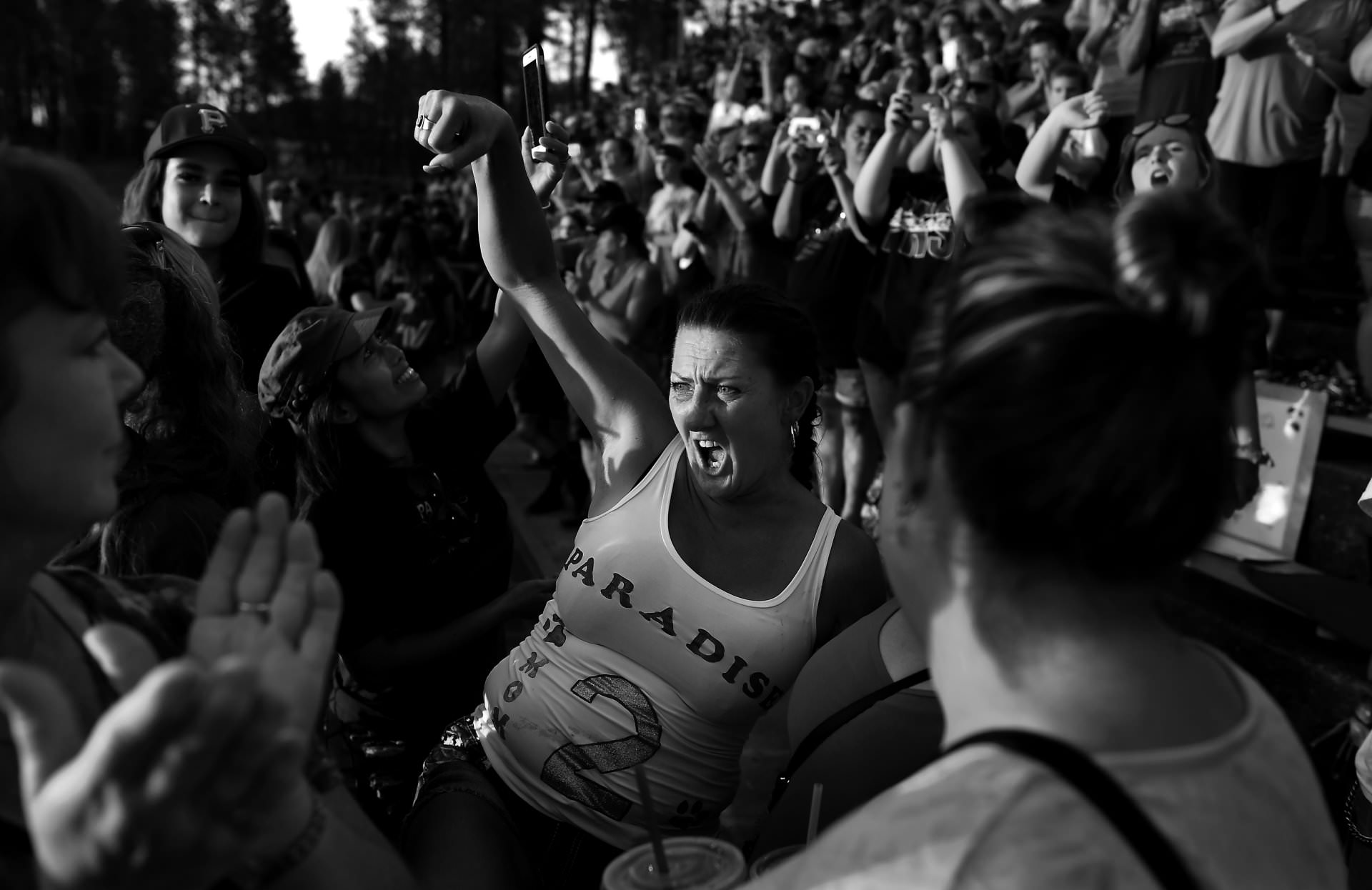World Press Photo 2020: The Winners
The winners of the 63rd edition of the World press photo, the most important photojournalistic award in the world, were announced on April 16th. The announcement was made on the award’s social networks because the ceremony in Amsterdam was canceled due to measures to combat the spread of COVID-19.
The international jury had examined the works of 4,282 photographers from 125 countries for a total of 73,996 images. 44 photographers from 24 countries had reached the final.
Photo of the Year: Yasuyoshi Chiba
Straight Voice
A young man, illuminated by mobile phones, recites protest poetry while demonstrators chant slogans calling for civilian rule, during a blackout in Khartoum, Sudan.
Protests in Sudan began in December 2018 and spread rapidly throughout the country. By April 2019, protesters were staging a sit-in close to army headquarters in the capital Khartoum and demanding an end to the 30-year rule of dictator Omar al-Bashir. On 11 April, al-Bashir was removed from office in a military coup, and a transitional military government was established. Protests continued, calling for power to be handed to civilian groups. On 3 June, government forces opened fire on unarmed protesters. Scores of people were killed and many more subject to further violence. Three days later the African Union suspended Sudan, in the midst of widespread international condemnation of the attack. The authorities sought to defuse protests by imposing blackouts and shutting down the internet. Protesters communicated by text message, word of mouth and using megaphones, and resistance to military rule continued. Despite another severe crackdown on 30 June, the pro-democracy movement was eventually successful in signing a power-sharing agreement with the military, on 17 August.
Story of the Year: Romain Laurendeau
Kho, the Genesis of a Revolt
A view over Algiers, Algeria.
Young people make up more than half of Algeria’s population, and according to a UNESCO report, 72% of people under 30 in Algeria are unemployed. Pivotal moments in Algerian history, such as the ‘Black October’ revolt of 1988, have had angry youth at their core. Black October was harshly suppressed—more than 500 people were killed in five days—and was followed by a ‘black decade’ of violence and unrest. Thirty years on, the effects of that decade are still present. In a traumatized country, high unemployment leads to boredom and frustration in everyday life and many young people feel disconnected from the state and its institutions. Football, for many young men, becomes both an identity and a means of escape, with quasi-political groups of fans known as ‘Ultras’ playing a large and sometimes violent role in protests. In neglected working-class neighborhoods such as Bab el-Oued in Algiers, young people often seek refuge in diki—private places that are ‘bubbles of freedom’ away from the gaze of society and from conservative social values. But the sense of community and solidarity is often not enough to erase the trials of poor living conditions. In February 2019, thousands of young people from working-class neighborhoods again took to the streets in what became a nationwide challenge to the reign of long-time president Abdelaziz Bouteflika.
Kho (the word means ‘brother’ in colloquial North-African Arabic) is about the genesis of a revolt. It is the story of the deep unease of youth, who, by daring to challenge authority, inspired the rest of the population to join their action, giving birth to the largest protest movement in Algeria in decades.
(See the complete series on WPP website.)
Contemporary Issues, singles: Nikita Teryoshin
Nothing Personal – the Back Office of War
A businessman locks away a pair of anti-tank grenade launchers at the end of an exhibition day, at the International Defence Exhibition and Conference (IDEX) in Abu Dhabi, United Arab Emirates.
IDEX is the biggest defense exhibition and conference in the Middle East, and one of the biggest arms trade-fairs in the world. No official attendance figures are released, but according to UAE state media, the event was expected to draw 1,200 global defense specialists, 1,235 exhibitors, and more than 105,000 visitors. Attendees include defense ministers, military chiefs of staff and key government decision-makers, who interact in conference halls, social events and back-office meetings. War is staged in an artificial environment where mannequins and screen images take the place of real people and with outdoor demonstrations and daily choreographed battle displays on water.
Contemporary Issue, stories: Lorenzo Tugnoli
The Longest War
Abdul Rahman (20; center) walks with a group of Taliban fighters in the Khogyani district, eastern Afghanistan. He was a farmer before he joined the Taliban and lost a hand trying to defuse a bomb.
The Taliban made significant territorial gains and increased their influence in Afghanistan in 2019. Eighteen years after the US invasion, and five years since the Afghan National Defense and Security Forces (ANDSF) have been responsible for securing Afghanistan, the Taliban control or contest around half the country, in some districts acting as a shadow government. Peace talks begun in January appeared to be nearing agreement in August but were scuppered by US President Donald Trump in September. Fighting escalated during talks as both sides tried to gain leverage, while on the ground the talks provided the Taliban with increasing political legitimacy. The frequency and spread of Taliban violence left the ANDSF overstretched and in some cases overwhelmed, with a high casualty rate. The escalation of the conflict also severely impacted the civilian population, resulting in high casualties, forced displacement, extreme insecurity, lack of access to education and a weakened public health system. A report published in June 2019 by the Institute for Peace and Economics named Afghanistan as the world’s “least peaceful” country, replacing Syria, though by early 2020 it seemed that a peace agreement was once again a possibility.
(See the complete series on WPP website.)
Environment, singles: Esther Horvath
Polar Bear and her Cub
A polar bear and her cub come close to equipment placed by scientists from Polarstern, a ship that is part of a scientific expedition investigating the consequences of Arctic climate change, in the central Arctic Ocean.
The Arctic harbors some of the fastest-retreating sea ice on the planet and has twice the average global heating rate. This will strongly affect the global climate in terms of increasing temperatures and sea-level rise, yet Arctic climate system processes are poorly represented in climate models. This is because until now scientific missions have not been able to penetrate the region during the six-month-long night of the Arctic winter. The Polarstern is the central ship of an expedition run by the Multidisciplinary drifting Observatory for the Study of Arctic Climate (MOSAiC), specially designed to withstand extremely low temperatures and breakthrough thicker ice, enabling around 100 researchers and crew to work all year round. MOSAiC data on the atmosphere, ocean, sea ice, ecosystem and biogeochemistry will be fed into global climate models.
Environment, stories: Luca Locatelli
The End of Trash – Circular Economy Solutions
Amager Bakke, a waste-to-energy plant that replaced an old coal incineration plant, near Copenhagen, Denmark, produces enough electricity to power at least 60,000 homes and heat 72,000. Advanced filtration technology reduces emissions of noxious nitrogen oxides to almost zero.
For centuries, industrialized countries have followed a take-make-waste linear economy: raw materials are gathered and transformed into products that are sold and then discarded as waste. Value is created in this economic system by producing and selling as many products as possible. The model not only drains natural resources but also—in the demands it makes in energy consumption and because of a reliance on fossil fuels—exacerbates global heating. A circular economy offers an alternative by decoupling economic activity from the consumption of finite resources. It is based on designing waste and pollution out of the system, keeping products and materials in use, and regenerating natural systems. Farmers, manufacturers, and governments across the globe are taking steps to experiment with and implement a circular economy as part of their efforts to address the climate crisis.
(See the complete series on WPP website.)
Nature, singles: Alain Schroeder
Final Farewell
The body of a month-old orangutan lies on a rescue team’s surgical drape, near the town of Subulussalam, Sumatra, Indonesia. She died soon after being found with her injured mother on a palm oil plantation.
Orangutans live on just two islands in the world, Sumatra, and Borneo, and are being forced out of their natural rainforest habitat as palm oil plantations, logging and mining proliferate. According to the World Wildlife Fund, there are only around 14,000 Sumatran orangutans left. As female orangutans dedicate eight to nine years raising each child before having another, populations are easily at risk of decline. The baby orangutan’s mother, named Hope by rescue workers, was found totally blind, with a broken clavicle and 74 air-gun wounds. She had been shot at by villagers after eating fruit from their orchards.
Nature, stories: Alain Schroeder
Saving Orangutans
SOCP staff help prepare three-month-old orangutan, Brenda, for surgery at the SOCP Quarantine Centre, in Sibolangit, North Sumatra, Indonesia. She had been confiscated from a villager who was keeping her as a pet.
Indonesia’s orangutans are under severe threat from the ongoing depletion of the rainforest. Sumatran orangutans, which once ranged over the entire island of Sumatra, are now restricted to the north and critically endangered. They are almost exclusively arboreal: females virtually never travel on the ground and adult males do so rarely. As logging, mining, and palm oil cultivation increase, orangutans find themselves squeezed into smaller pockets of forest, forced out of their natural habitat and in more frequent conflict with humans. Organizations such as the Sumatran Orangutan Conservation Programme (SOCP) care for lost, injured and captive orangutans, aiming to reintroduce them into the wild. Human caregivers take on the maternal role that female orangutans play, aiming to reintroduce young to their natural habitat at around the age of seven or eight when they would naturally leave their mothers in the wild.
(See the complete series on WPP website.)
Portraits, singles: Tomek Kaczor
Awakening
Ewa, a 15-year-old Armenian girl who has recently woken from catatonic state brought on by Resignation Syndrome, sits in a wheelchair, flanked by her parents, in a refugee reception center in Podkowa Leśna, Poland.
Resignation Syndrome (RS) renders patients passive, immobile, mute, unable to eat and drink, incontinent and unresponsive to physical stimulus. It affects psychologically traumatized children in the midst of lengthy asylum processes and seems most common in Roma and Yazidi children as well as those from the Balkans. It was first noted in the late 1990s and was thought to be confined to Sweden, though cases have since been reported in the offshore refugee detention center run by the Australian government in Nauru. Remission and the gradual return to normal function occur after life circumstances improve. Ewa succumbed to RS while her family were trying for asylum in Sweden and threatened with deportation to Poland, which had been their country of the first arrival as refugees. They feared being sent back to Armenia. The family was deported to Poland, despite Ewa’s illness, but she recovered eight months after they arrived.
Portrait, stories: Adam Ferguson
The Haunted
Rezan (11), who was kidnapped by IS in 2014 and freed in early 2019, at the Khanke IDP Camp in Dohuk, Iraqi Kurdistan.
As the Islamic State group (IS) retreated from territory around Mosul in northern Iraq, thousands of former IS prisoners were liberated, many in severe states of trauma. The photographer took posed portraits of displaced Yazidi people and other minorities who had suffered human rights violations perpetrated by IS, in camps for displaced people in northern Iraq. The Yazidi religion is monotheistic and can be traced back to ancient Mesopotamian and Abrahamic roots. Due to their unique beliefs, the Yazidi people were seen by the Sunnis of IS as ‘devil worshippers’. When IS occupied ancestral Yazidi lands in northern Iraq in 2014, IS fighters massacred around 5,000 Yazidi men. Women and girls were abducted and forced into sexual slavery, and boys forced to train as child soldiers. Some 500,000 Yazidis were displaced. Many now live in refugee camps in Iraqi Kurdistan and Nineveh Governorate in Iraq. Jan Kizilhan, a psychologist working in one such camp at a center for people who survived the atrocities, points to the effects of this severe personal and cultural trauma. These include feelings of helplessness and powerlessness, tension, and a variety of physical illnesses.
(See the complete series on WPP website.)
Spot News, singles: Farouk Batiche
Clash with the Police During an Anti-Government Demonstration
Students scuffle with riot police during an anti-government demonstration in Algiers, Algeria.
Algeria had been embroiled in protests since February. Initially, protests had been aimed at ousting long-time president, Abdelaziz Bouteflika, an 81-year-old veteran of Algeria’s independence struggle who had been in ill-health and not seen in public for some time. Bouteflika resigned in April, handing over to a military-backed caretaker government, but demonstrations continued. Protesters demanded the cancellation of the presidential elections set to take place on 4 July and a return to civilian democracy. They also called for the departure of government officials associated with the Bouteflika administration, including the interim president and prime minister. Protests continued into 2020 without successful resolution.
Spot News, stories: Mulugeta Ayene
Relative Mourns Flight ET 302 Crash Victim
A relative of a victim of the Ethiopian Airlines Flight ET302 plane crash throws dirt in her face as she grieves at the crash site, near Addis Ababa, Ethiopia.
On 10 March, Ethiopian Airlines Flight ET302, a Boeing 737 MAX, disappeared from the radar six minutes after take-off from Addis Ababa airport and crashed into a field, killing all 157 people on board. The impact was so great that both engines were buried in a crater 10 meters deep. A week after the crash, empty coffins were buried at a ceremony at the Holy Trinity Cathedral in Addis Ababa, as victims were unable to be identified. Officials gave relatives bags of earth from the crash site. On 14 November, eight months after the crash, the site of the impact was covered and the unidentified remains of victims buried in rows of identical coffins. Comparisons were made with the crash of a Lion Air aircraft, also a 737 MAX, 12 minutes after take-off from Jakarta in October 2018. Countries across the world, initially with the exception of the US, grounded the 737 MAX. First reports showed that pilots had been unable to prevent the plane repeatedly nosediving, despite following procedures recommended by Boeing. It appeared that in both cases pilots were struggling to deal with an automated safety system designed to prevent stalling, which was repeatedly pushing the nose of the plane down. It seemed that the system was being activated, possibly due to a faulty sensor, even though nothing was wrong. It later emerged that American Airlines pilots had confronted Boeing about potential safety issues with the MAX. Boeing had resisted their calls but promised a software fix, which had not been done by the time Flight ET302 crashed. Planes remained grounded in 2020.
(See the complete series on WPP website.)
Sports, singles: Mark Blinch
Kawhi Leonard’s Game 7 Buzzer Beater
Kawhi Leonard (squatting, center) of the Toronto Raptors watches his game-winning buzzer-beater shot go into the net, while playing against the Philadelphia 76ers in Game 7 of the Eastern Conference Semifinals of the 2019 National Basketball Association (NBA) Playoffs, at the Scotiabank Arena, Toronto, Canada.
A buzzer-beater is a successful shot made just as the buzzer sounds to indicate the end of a game, or period in a game. Leonard’s ball hit the rim as the final buzzer sounded, and bounced around four times before dropping through the net. This was the first Game 7 game-winning buzzer-beater shot in NBA history. Toronto Raptors and the Philadelphia 76ers had at this point each won three games of the seven-game series. After eliminating the 76ers, Toronto Raptors went on to be the first team based outside the USA to win the NBA finals.
Sport, stories: Wally Skalij
Rise from the Ashes
Paradise Bobcats players work out in the late afternoon as they prepare for their first game since the wildfire. Following a wildfire that devastated their town, members of the Paradise Bobcats from the small rural community of Paradise, California, USA, returned to their football field to revive the team and embark on a new season. The November 2018 Camp Fire was the most destructive wildfire in Californian history. Paradise was almost completely burnt to the ground, and 90% of its population were dispersed to towns and cities across the US, but the fire stopped at the edge of Paradise High School’s football field, sparing it and the surrounding sports buildings. Nearly everyone on the team lost their home, but players began returning when coach Rick Prinz started practices, some commuting for up to 90 minutes to get there. They saw reviving the team as a part of rebuilding the community. The Bobcats went on to have a successful season, playing undefeated until losing the final for the championship at the end of the year.
(See the complete series on WPP website.)
For more info about all winners: https://www.worldpressphoto.org/

